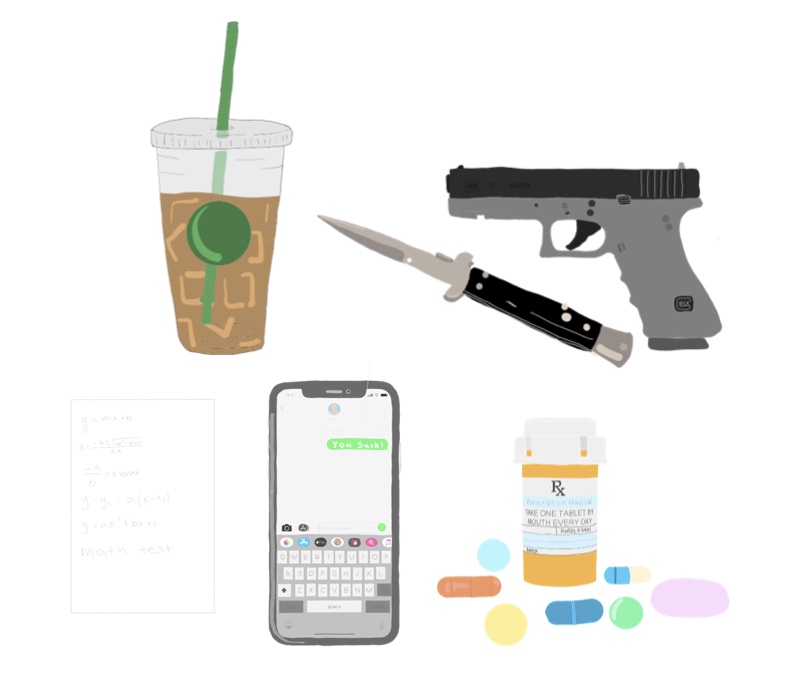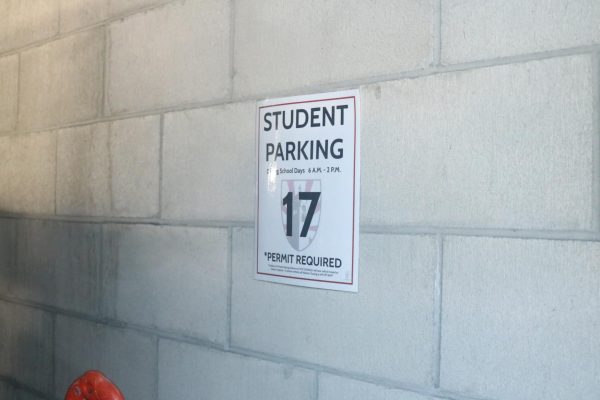Debunking the DC
A closer look at the Disciplinary Committee
Violation of the Fundamental Standards; being off-campus without permission; use, distribution, or possession of drugs or alcohol; possession or use of a weapon on campus. Art by Alex Cotton (’21)
The Disciplinary Committee (DC) has widely been considered a mystery, like a secret society arbitrating the actions of students. Although we sometimes hear rumors of a student being sent to the DC or even expelled, the inner workings of the DC are largely unknown to students. This begs the question: what does the DC even do?
There are four major infractions that get students sent to the DC: a major violation of the Fundamental Standard; being off-campus without permission; the use, distribution, or possession of drugs or alcohol; or possession or use of a weapon on campus. Cheating, harassment, and bullying are all considered major violations of the Fundamental Standard.
After a student breaks one of these rules, they are reported to Dean of Students Mr. Michael Beamer, usually by a teacher. Mr. Beamer then conducts research around the accusation. As a part of his research, he meets with the student and the teacher who reported the incident to hear their perspectives, and he pulls up the student’s disciplinary record. He also includes any evidence deemed important to the case, like a cheat sheet or a plagiarized essay. His main goal is to find out how, when, and where the event in question happened. Later, with the information he has gathered, Mr. Beamer creates a folder to send out to all of the DC members, so that, by the time they meet, everyone involved is familiar with the facts.
While Mr. Beamer gathers research, the student creates a personal statement to add to the folder, usually giving their perspective on the event in question. They also ask a trusted adult, often times a teacher or a coach, to vouch for their character. This is usually a teacher they have a strong relationship with.
When the committee finally meets, their main goal is to find out why the infraction took place, as well as why the student felt they needed to break a school rule and what they can do differently in the future. Mr. Beamer has found that “often students feel like they have no other choice [than to break the rule].” The committee aims to show students in this situation that they often have more choices then they think.
Once the meeting concludes, the committee deliberates about what the best disciplinary action is. Each member of the committee gets an equal vote. Ashley Cohen (‘22), a previous member of the DC and a current DC alternate said, “I think the Disciplinary Committee allows students to engage in meaningful discussions that are not as common in the average school day. We are so lucky that we go to a school that holds students’ opinions at the same level as teachers and administrators.”
The DC is made up of four students and four adults, one student elected from each high school grade level. The members change annually. The current representatives are Dax Gutekunst (‘23), Hunter Kates (‘22), Dhruvi Banerjee (‘21), and Courtney Anderson (‘20). The first faculty representative, Associate Director of College Counseling Mr. AJ Jezierski, was elected by the faculty. The second, English teacher and Associated Student Body Council Coordinator Ms. Michelle Shea, was elected by the students. The third, Director of Diversity and Community Life Mr. David Thompson, was appointed by Head of School Mr. Ron Kim. The final member is Mr. Beamer.
There are four major responses the committee can give. The first is a disciplinary warning, which is simply a note of caution from the committee saying not to commit any other infraction. The second is a disciplinary reprimand, which is more serious but is not reported to colleges. The third is probation, which is similar to a disciplinary reprimand but is reported to colleges. The final is expulsion, which is the decision reached only in the worst of circumstances. The committee often recommends extra actions, such as a meeting with Academic Support Coordinator Ms. Jane Mattox, Director of Counseling Ms. Megan Broderick (‘98), or Mr. Thompson to address whatever issue sent them to the DC and help the student move forward and make better choices in the future.
The eventual course of action the DC takes is based on a number of things, such as grade level— there are higher expectations for older students. They also look at the extent of the infraction and how the student behaved in front of the committee.
At the end of the day, the main goal of the disciplinary committee is to help the student. The disciplinary committee approaches the problem wanting to find a solution. Ashley said, “Overall, my experience on the Disciplinary Committee gave me a new perspective and appreciation for how Bishop’s gives students representation in these matters and allows our voices to be heard and respected.” Mr. Beamer said, “We see ourselves as working in support of the student who is meeting with us.”

Alex Cotton really enjoys Digestives. They are super good. Alex is particularly fond of their chalky texture and flavor. Her favorite versions are the...







kyle • Nov 18, 2019 at 5:38 PM
what a fire article!
Alex Cotton • Nov 17, 2019 at 8:55 PM
yay